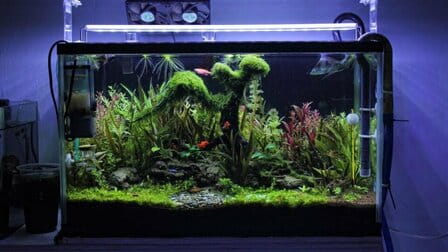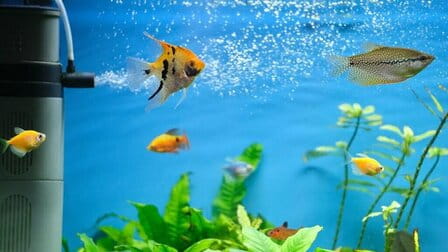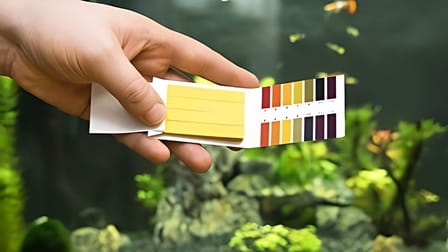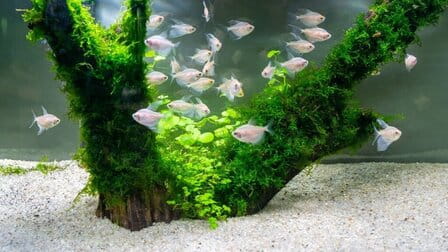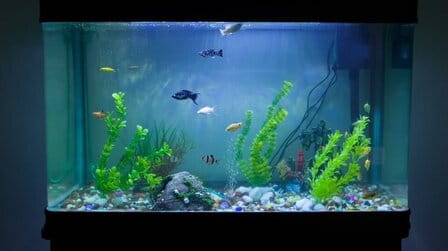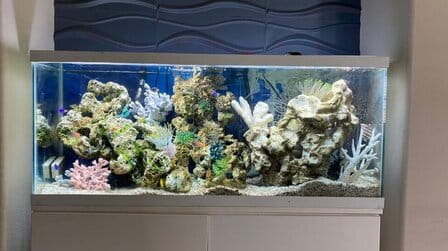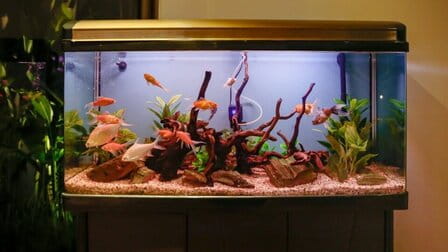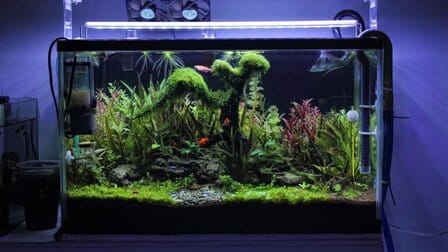A well-maintained aquarium is a captivating addition to any space, offering a glimpse into a vibrant underwater world. However, when the water in your fish tank turns cloudy, it can be a cause for concern. Cloudy water not only detracts from the beauty of your aquarium but can also indicate underlying issues that threaten the health of your aquatic pets. Fortunately, understanding the causes of cloudy water and knowing how to remedy it can help you maintain a clear and thriving aquatic environment.
In this comprehensive guide, we will explore the various types of cloudy water, their causes, and provide step-by-step solutions to restore clarity to your fish tank. Whether you're a novice aquarist or an experienced fish keeper, this guide will equip you with the knowledge and strategies to keep your aquarium water crystal clear.
Understanding Cloudy Water
Before we delve into the solutions, it's essential to understand the different types of cloudy water that can plague aquariums:
Green Water (Algae Bloom): This type of cloudiness gives the water a greenish tint and is caused by an overgrowth of single-celled algae suspended in the water. Algae blooms can occur due to excessive light and nutrient levels.
White Cloudiness: White cloudiness is often caused by fine suspended particles in the water. It can result from overfeeding, inadequate filtration, or disruptions to the tank's biological balance, leading to bacterial blooms.
Brown Water (Tannins): When your tank's water has a brownish tint, it is likely due to the release of tannins from driftwood or the decomposition of organic matter. This is common in setups with natural decorations like driftwood.

Now, let's address each type of cloudy water and explore how to remedy them:
Green Water (Algae Bloom)
Step 1: Reduce Light Exposure
Algae thrive on light, particularly when it's excessive or left on for extended periods. To combat green water, consider the following:
Limit Light Duration: Reduce the duration of light exposure to your aquarium to approximately 8 hours a day. You can use a timer to automate the lighting schedule, ensuring consistency.
Adjust Light Intensity: If possible, adjust the brightness of your aquarium light. Some plants and fish may require less intense lighting, which can discourage algae growth.
Step 2: Perform Regular Water Changes
Frequent water changes are crucial for maintaining water quality and reducing excess nutrients that promote algae growth. Here's what you can do:
- Schedule Weekly Water Changes: Aim to change approximately 10-20% of the water in your aquarium every week. Be sure to use a high-quality water conditioner to treat tap water before adding it to the tank.
Step 3: Adjust Feeding Habits
Overfeeding is a common cause of algae blooms due to the excess nutrients it introduces into the water. To prevent this:
- Feed Sparingly: Provide your fish with an appropriate amount of food, and remove any uneaten food promptly. Opt for high-quality fish food with fewer fillers to minimize nutrient excess.
Step 4: Introduce Algae-Eating Fish or Invertebrates
Certain fish species and invertebrates are natural algae eaters and can help control algae growth in your tank. Consider adding the following:
Siamese Algae Eaters: These fish are known for their voracious appetite for algae.
Plecos: Plecostomus catfish are excellent at keeping algae in check.
Nerite Snails: These small snails are renowned for their algae-eating prowess.
Amano Shrimp: Amano shrimp are diligent algae consumers and can help maintain a clean tank.

White Cloudiness
Step 1: Check Filtration
Inadequate filtration or a clogged filter can lead to bacterial blooms and white cloudiness. To address this:
Evaluate Filtration System: Ensure that your aquarium's filter is appropriately sized for your tank and the fish you keep. Consult the manufacturer's recommendations for maintenance intervals.
Regular Filter Cleaning: Clean your filter regularly, replacing filter media as needed. A clean filter is essential for effective water circulation and biological filtration.
Step 2: Perform Regular Water Changes
As with green water, regular water changes are essential to remove excess nutrients and suspended particles. Modify your water change routine as follows:
- Adjust Frequency: Depending on the severity of cloudiness, you may need more frequent water changes. Regular testing can help you determine the optimal schedule.
Step 3: Maintain Proper Water Parameters
Fish and plants have specific water parameter requirements. Ensure that your tank's parameters are suitable for your aquarium's inhabitants:
- Water Testing: Use a reliable water test kit to monitor parameters like pH, ammonia, nitrite, and nitrate levels. Keeping these within acceptable ranges can prevent water quality issues.
Step 4: Avoid Overfeeding
Overfeeding can introduce excess organic matter into your tank, leading to bacterial blooms and white cloudiness. To avoid this:
- Follow a Feeding Schedule: Establish a feeding schedule and stick to it. Remove any uneaten food within a reasonable time frame to prevent decomposition.

Brown Water (Tannins)
Step 1: Remove or Treat Driftwood
If your tank's brown water is due to driftwood, you have a couple of options:
Remove Driftwood: If the tannins are causing excessive discoloration and you prefer clear water, you can remove the driftwood from the tank.
Boil Driftwood: Before placing driftwood in your aquarium, consider boiling it to leach out some of the tannins. Repeat this process until the water runs clear.
Step 2: Use Activated Carbon
Activated carbon is an effective tool for removing tannins from the water. Here's how to use it:
- Place in the Filter: Add activated carbon to your aquarium's filter according to the manufacturer's recommendations. Replace the carbon as instructed to maintain its effectiveness.
Step 3: Perform Partial Water Changes
Regular water changes will gradually reduce the concentration of tannins in your tank. While this method requires patience, it can effectively clear the water over time:
- Monitor Progress: Keep an eye on the water's clarity as you continue with your routine water changes. Eventually, you should observe a significant improvement.
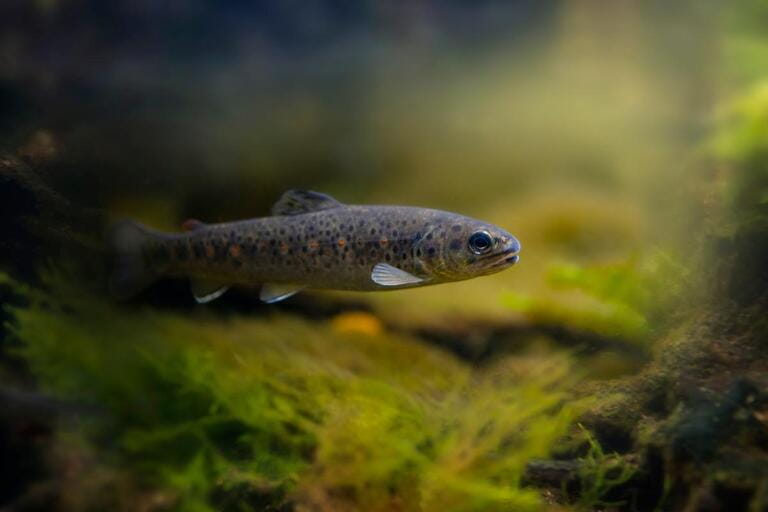
General Tips for Preventing Cloudy Water
In addition to addressing specific types of cloudy water, consider these general tips for maintaining clear and healthy aquarium water:
Regular Cleaning Routine: Clean the substrate, decorations, and glass regularly to remove debris that can contribute to cloudy water.
Avoid Overstocking: Overcrowding your tank can lead to excess waste production and cloudy water. Follow appropriate stocking guidelines based on your tank's size and filtration capacity.
Quarantine New Fish: Before adding new fish to your main tank, quarantine them in a separate tank for a few weeks. This helps ensure they are healthy and free from disease.
Monitor Water Parameters: Regularly test and monitor water parameters like pH, ammonia, nitrite, and nitrate levels. Keeping these in check can prevent water quality issues.
Use a Quality Filter: Invest in a high-quality filter that is appropriate for your tank's size. Ensure that you maintain it according to the manufacturer's guidelines.
Avoid Chemical Overuse: Be cautious when using water treatments and chemicals. Only use them when necessary and follow the instructions carefully to avoid disruptions in your tank's ecosystem.
Conclusion
Maintaining clear and healthy water in your fish tank is essential for the well-being of your aquatic pets and the overall enjoyment of your aquarium. By identifying the type of cloudy water and following the steps outlined in this guide, you can effectively address and prevent cloudiness, ensuring a vibrant and thriving aquatic environment.
Remember that patience and consistent maintenance are key to long-term success in keeping your aquarium water crystal clear. With proper care and attention, you can enjoy the beauty and tranquility of your aquarium while providing your fish with a safe and comfortable home.

